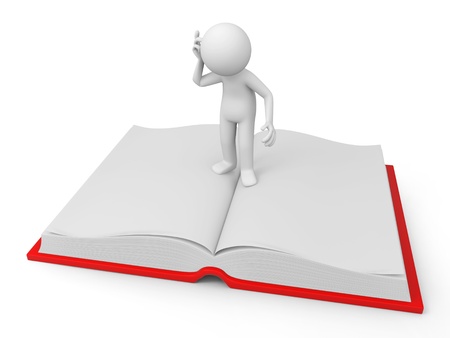How to read effectively
Effective readers start with a purpose. If you are clear on why you are reading something, you can approach the reading with a strategy that efficiently delivers against that why. Here is my approach to read effectively.
Reasons for reading
There are a number of different reasons you might have for reading something.
| Reason | Approach |
| Understanding new ideas and concepts | Skim read or read summaries |
| Finding specific facts | Zoom right into key facts |
| Evaluating a proposal e.g. business plan, project plan |
Skim to understand the concept then look for driving assumptions |
| Quality review/validity checking | Focus on your areas of concern / professional responsibility |
| Quality review – proofreading | Text to speech or read backwards if it is your own document. I’ll not cover tips for professional proofreading as I doubt many dyslexics do this |
| Learning a new skill | Read then implement then review |
Effective reading starts with structure analysis
Most people read by staring at the first sentence and then continuing from there. This is not the most effective approach for most people. It is especially ineffective if you are prone to non-linear thought processes. Understanding the structure of a book or document will provide a framework onto which you can hang the key points.
For longer texts read the table of content and for shorter works read the key headings. How has the author divided the topics? Are there some sections that are more or less relevant to achieving your purpose? Does it cover the things you thought it would?
An additional tip I gained from a speed reading for dyslexics course is to scan for numbers and statements in bold font. The aim of this is not to understand the context or significance but to create an open cognitive loop. This is covered in Made to Stick. Open loops motivate us to find closure. This is the reason so many posts on social media have the format blah blah but you will never guess what happened next. This technique can provide motivation to stick with a challenging text.
Skip to the end
This approach would destroy a murder mystery novel but is a great time saver with professional texts. Typically at the end, there is a conclusion. Sometimes this is put at the front as an executive summary. Carefully reading this will give you an understanding of what the author believes are the key points.
With the structure and summary under your belt consider if this text is relevant to your aims. Stop if it’s not!
Now is the time to dig in and find key facts if you are reading to ascertain key facts. If you want to understand new ideas or learn new skills make a list of the key things you want to get from this document. If you are evaluating a proposal or validity checking documents write down the key questions you want to be answered.
Skim the document
You now have an understanding of the structure of the document and the conclusion/summary. You have refined your purpose with a list of questions the document needs to answer. Well written documents have a structure to them. Sections start with an introduction and end with a summary.
Some documents even have this replicated in the paragraph structure. The opening sentence introduces an idea or concept. This is followed by sentences of explanation or justification. Finally, the paragraph ends with a summarising sentence.
This structure can be exploited to actively scan documents. Read the first sentence of each paragraph. This is fleshing out the structure you got from the earlier analysis. You may wish to mark up particular sections that you this will require careful reading. Areas requiring careful reading may be ideas that are new or counter-intuitive to you.
If you are reading a book this skimming the document can be replaced by a book summary service such as blinkest.
Skimming the document may provide you with what you need, in this case, job done. It may determine that that document will not meet your aim so you can cut your losses and stop.
If there is continued value in reading it is time to update your purpose. What do you need to achieve by reading more of the text? Which areas do you need to probe deeper? Create a list or mind map of what you want to get from your continued engagement with the text.
Dig Deeper
Now it is time to read a little more conventionally. However, we are still not going to start and page 1, chapter 1 and go from there. With your aims in hand go to the first part of the document that addresses that aim. Read until you have achieved that aim. This may require using your knowledge of the structure to jump around a bit to get supporting data from other parts of the document. Repeat this process until the aims are complete.
Conclusion
The approach proposed here has multiple passes of the document. This aids retention. Capturing the aims of reading the document or the questions it must answer forces a more active engagement with the text. Efficient reading is not about reading words faster it is getting what you need form the document faster. Effective reading requires being clear on what you want to get from the text and doing so efficiently.

